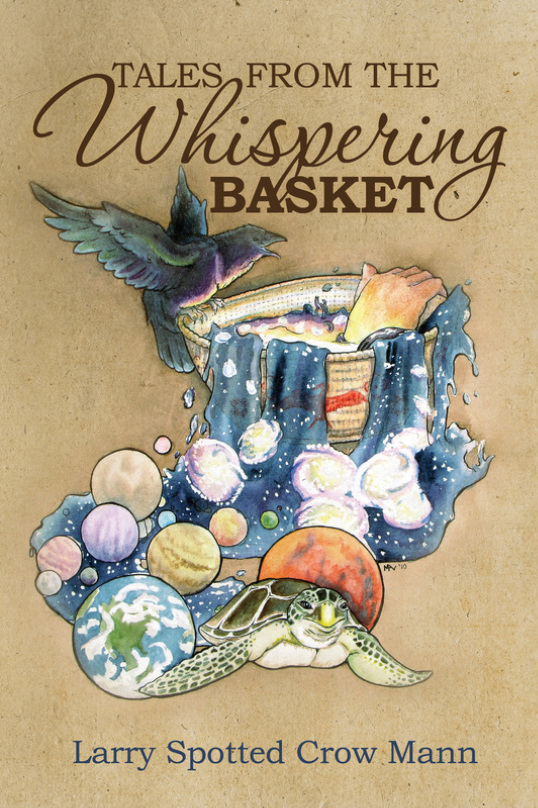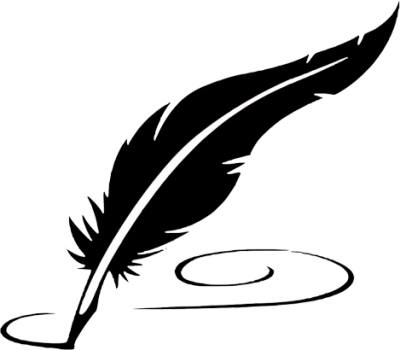Next Saturday, June 11, in Webster, Mass, Larry Spotted Crow Mann will be launching his first book, Tales from the Whispering Basket. This collection of short stories and poetry is informed by his Nipmuc experience, imagination, and knowledge of tribal history. For details, see his website.
I asked Larry if he’d be willing to chat about his writing and publishing experience.
SS: How did you come to write this book, and how did you decide you were ready to publish?
LSCM: I’ve been writing since I was in my early twenties. Usually it was letters of a political manner concerning issues facing my tribe. My family and friends would tell me how passionate and compelling my letters were and how well detailed I would chronicle the history and stories of our people. However it wasn’t until I went back to college about five years ago that the confidence to actually publish began to bloom. As each semester went by, every professor would tell me how wonderful and creative my essays were. Finally one of the professors suggested I enter a story and poem into the school’s Journal of Fine Arts contests. Surprisingly I won and thus was my first publication. After that I thought to myself to put some of my creative stories and poems together in a book. I didn’t want to just to put together a Native American historical text reciting dates and events. I saw this as an opportunity to let my creativity flow that is inspired by Native American events, but also all of life around us. As far being ready; well that took a lot of patience because the editing process is another story in itself.
SS: So how long would you say it took to put this book together, start to finish? What was involved?
LSCM: Fortunately I’m able conceptualize a story rather quickly. I visualize the action and characters almost like a movie. So putting the stories together took about 5 months. However, format, exterior designs, grammar and editing brought the entire project to about 2 years. Even with that, I feel the process went rather quickly due to help I had from good friends who have already written books. I’ve learned a great deal of all the intricacies of putting a book together. I must say, it was quite grueling at times but definitely a learning experience that will allow me to move along much better on my next project.
SS: I know what you mean!–most people don’t realize (if they haven’t published a book themselves) that the writing is only a tiny part of the whole process. Getting it into print is an entirely different story. Who is publishing this book, or are you self-publishing, and how did you make that decision?
LSCM: Amazon is the publisher through their service; however it is considered self publishing. I went this route because I know how long it could take ( sometimes years) for a publisher to accept your work in this business. Not to mention it could be years before they even look at it. Needless to say, a writer needs to have a lot of confidence in their work if they are willing to publish. I truly believe this collection of stories and poetry will do well and thus catch the attention of a publisher rather than me trying to get theirs. And from that point , it could be a possibility to publish outright.
SS: One last question, Larry: what’s the next project?
LSCM: In my current book is the short story “Mattawamp.” This is a depiction of the real life Nipmuck Quaboag Chief and hero of King Philip’s War of 1675. The story takes place when Mattawamp is a boy (1650) and has to deal with the changing world around him. Many of the events that take place in his childhood would ultimately affect him and his view of the new colonists on his homeland. The short story I wrote covers about a year of Mattawamp’s life. I want to write a full novel which will continue the saga and lead up to and after the King Philip’s War. To me this will be an important book, because it’s not just a Native perspective but a Nipmuc perspective that is far too often left out. Philip is the one people mostly think of , when in fact it was Nipmucs who did most of the fighting and the sacrifice. People like Monoco, Matoonas, Sagamore Sam and of course Mattawamp, led the most successful campaigns during the conflict. These are little known facts until people start to look into the history. My future novel will resurrect these Nipmuc leaders of the past who have been almost forgotten from history.
Also I want to continue writing short stories in many different genres. I find it exciting because even when creating a fictional story there’s research involved. I love learning, especially about things I may think I don’t like or want to write about. This allows me to take on an alter ego and voice in a story. But again the research is important; just like when you hear actors talking about getting to know a character inside out, I think it’s the same for writers.

